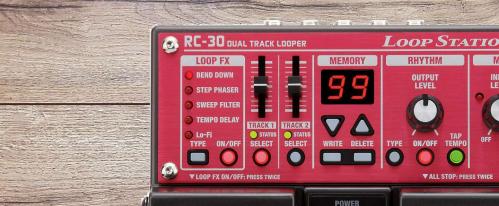STRUGGLING TO IMPROVE YOUR PLAYING? PERHAPS YOU ARE MISSING ONE OF THESE 6 ESSENTIAL GUITAR TECHNIQUES YOUR FAVOURITE GUITARISTS LOVE AND USE?
We teamed up with MGR Music & Norwich Guitar Academy to discuss the Top 6 Guitar Techniques every player needs to know. Leigh Sullivan, Director at Norwich Guitar Academy, highlighted his favourite techniques that every guitarist needs to add to their skill set. We also collaborated with Leigh Fuge at MGR Music Tuition who also offered some great video content and a backing track.
So in this lesson we are going to look at 6 tips and techniques all guitarists should know. These tips on guitar will cover a range of essential guitar techniques from riff-based techniques to some simple lead guitar phrases like how to play the A Minor Pentatonic Scale that you can get started with.
There is also a video that demonstrates each of the techniques along with a backing track with the lead guitar taken out so you can test the lead guitar ideas yourself over the riffs. You can watch the video at the bottom of the page.
1. PALM MUTING & CHOKING
Palm muting creates a ‘damped’ or ‘muffled' sound that takes the brashness off of ringing notes and also makes your playing ‘cleaner’.
Whether playing rhythm or lead, you may want to make your sound a little more percussive - this is where palm muting can be used to great effect!
To practise palm muting, simply place the base of your picking hand onto the bridge of the guitar and apply gentle pressure as you make contact with the strings. The closer you move the picking hand to the strings the less resonant and more muted they will become.
Moving the picking hand towards the back of the bridge allows the strings to resonate more and lets the notes ring clearer and longer. String ‘choking’ or ‘cutting off’ is simply stopping the strings from vibrating and ringing out.
This can be achieved with the picking or fretting hands or both simultaneously. To practice this you simply need to place your fretting and/or picking hand onto the string(s) after you strike them exactly when you wish to stop the notes from vibrating.
This guitar technique is ideal for stopping un-wanted notes from ringing out and can also create a great percussive and rhythmic feel when you keep the left hand over the strings and practise your strumming techniques.
2. VIBRATO
Vibrato is one of the most expressive guitar techniques available to us as guitarists. It is often regarded as each players ‘sonic fingerprint’.
Vibrato is generally used on single notes to make them sound more in tune, clearer and to add longer sustain. It also adds some personality and is even powerful enough to suggest a specific style of music.
For initial practise it is advisable to start small by beginning to apply vibrato to single strings. Once you feel confident of mastering this technique you can then move on and apply vibrato to intervals and chords.
To perform the technique itself simply fret a note, let it ring, and then gently push and pull the string up and down, I suggest you start with either your index or middle fingers first. You’ll need to work on keeping the note firmly fretted so that it rings throughout.
Placing the fretting hand thumb over the neck can also assist as a pivot for this technique. Practise different speeds, width, and intensity to get the most out of your vibrato.
3. STRING BENDING
String bending is a great guitar technique! - it’s one of the best and most lyrical - particularly when it’s time to make it sound like you mean what you are playing.
It’s a great conveyor of emotion!
So, If you want to add a bit of lyricism to your lead playing and get some classic blues licks under your belt, practise string bending! I suggest that you begin by fretting a note with the ring finger, preferably on the high E or B strings and whilst fretting the note place your fretting hand middle and index behind the ring finger to help support the bend.
Whilst firmly fretting with your ring finger, pick the string and push the note up towards the bass strings. If you are performing the technique correctly, you will hear a smooth increase of pitch and the higher you bend, the higher the pitch.
You will need to spend some time practising bending up to ¼ tone, ½ tone and tone bends, bending out of tune never sounds good. Once you have these basic bends down, try to take it further with tone and a half bends to add a bit more variety.
You can also practise techniques such as pre-bending, where you bend the note up without striking the string, then pick and lower the string to the starting pitch.
Also, remember that you can bend downwards on most strings as well - the high E being an obvious exception.
4. HAMMER ONS & PULL OFFS
If you want to add some speed and fluidity to your playing, you’ll need to make the most of hammer ons and pull offs. Hammer ons and pull offs are great for adding little bursts of speed without the need for picking, so you get to place your main focus on the fretting hand.
Let’s begin with a hammer on:
Firstly you’ll need to pick a note, I usually recommend an open string to get started. Pick the string and bring your fretting hand index or middle finger quickly and forcibly down on onto a fret - the 2nd fret would be a good idea with open strings.
You’ll need to make firm contact on the tip of your finger with the string and fret. This technique also needs to be performed accurately as you bring the finger down, otherwise you might accidentally stop the string from vibrating.
Now you know how to perform a hammer on, the next logical step is a pull off:
Use your fretting hand index finger for starters. Hold down the note at fret 2/high E string, pick the string and then simultaneously lift your finger off the fret in a slight downwards direction.
This pretty much amounts to a ‘left hand pluck’. If you perform this correctly, you’ll notice how clearly the open string sounds after the fretted note.
After trying it like this practice the same technique using all your remaining left hand fingers as well.
5. SLIDES
Wondering how to move from one note to the next smoothly? Slides, also known as glissandos, are great for this and are often one of the techniques beginners start off their playing with by accident!
To perform a slide, fret a note on any string, keep the pressure nice and firm, then ‘drag’ the finger to another fret on the same string.
You can slide either higher or lower than the note you start with, if performed correctly, you’ll hear a smooth change in pitch with no dead notes in-between the slide.
Take your time to get a feel for string slides, these should generally sound smooth and even. Once this technique is mastered, you can then practise shift slides, which is the same as a slide, but you move faster and more rhythmically and positively between the notes.
Leigh Fuge adds:
Slides are played by picking a note, maintaining the fretting hand pressure and sliding the finger to your target note. When working on slides, try not to apply too much pressure as this will cause your finger to drag. You also want to be mindful of not applying enough pressure as this can cause the note to drop off before you arrive at your target note.
In the video example, the slides to the 9th fret on the G are shown as not having a starting point. Slides can be used as a way to start a phrase without having a committed start point, you would just “slide into” a target note. As these slides lead into 8th fret notes on the B string, I would recommend keeping these slides tight and maybe only starting 2 frets lower just to maintain the speedy feel.
6. Learn the A MINOR PENTATONIC SCALE
Learning the A Minor pentatonic scale, or any scale for that matter is handy for soloing and jamming with musicians. The pentatonic scale is especially useful as you can use this in pretty much every blues and rock song!
For all the lead licks in the video below we are using a scale known as the Minor Pentatonic scale. This is a 5-note scale repeated across various octaves and positions across the neck. We are playing this scale in the key of A Minor (Meaning we start on the A note of the Low E string, which is our 5th fret).
This scale can be moved to any key without changing the layout of the notes, but for the video below we are basing it all around the first 2 shapes in A Minor. This is how you play an A Minor Scale.


Watch the video below:
Thanks to Leigh Sullivan over at Norwich Guitar Academy for providing us with his top tips. If you're in the Norwich area, we recommend checking them out for all your electric guitar, acoustic guitar, classical, and bass lessons, as well as guitar setups, free first lessons, events and more.
Updated 2020-09-02
About The Author:
This lesson was brought to you by MusicTeacher.com, written by experienced guitar teacher Leigh Fuge. Leigh works as part of a community of guitar teachers based across the UK. We are delighted to share with you that the Guitar Lessons Brighton hub has opened it doors, welcoming new students of all levels - including complete beginners - to attend in-person lessons with a professional guitar teacher. To find guitar teachers local to you, as well as online guitar lessons, simply visit the MusicTeacher.com platform.
If you enjoyed this article and video, don’t forget to check out PMTVUK on Youtube for more guitar lesson videos.




